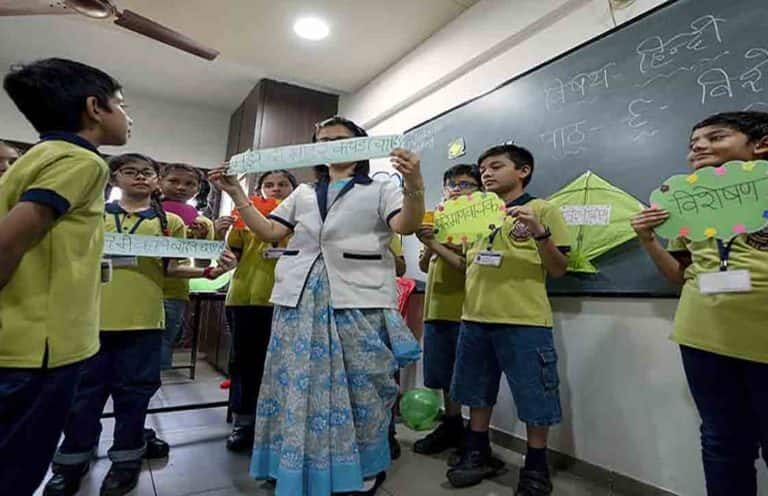
A comprehensive educational strategy that addresses a child’s emotional, social, physical, and creative development in addition to their academic progress is known as holistic learning. Holistic education integrates several learning elements in order to develop well-rounded individuals with a wide range of viewpoints, values, and skill sets. In order to develop a strong sense of engagement and fulfilment in the learning process, this method acknowledges the uniqueness of every kid and places an emphasis on personalised learning experiences that are tailored to each individual’s needs, interests, and strengths.
Children can gain from holistic learning in a variety of ways. It encourages inquiry and discovery across several topic areas and real-world contexts, which fosters critical thinking, creativity, and problem-solving abilities. In addition, holistic education fosters emotional intelligence, empathy, and resilience in students, giving them the skills they need to overcome obstacles, form wholesome relationships, and effectively handle stress. Children who are taught a holistic approach to learning grow up with a strong sense of self-awareness, self-confidence, and intrinsic motivation, which paves the way for success in all facets of life, lifetime learning, and personal fulfilment.
What is holistic learning
A holistic approach to education sees people as multifaceted entities whose intellectual, emotional, social, physical, and spiritual growth are all intertwined. In contrast to conventional approaches that prioritize academic performance, holistic learning stresses the integration of various characteristics to develop well-rounded people. It acknowledges that learning happens via a variety of encounters and exchanges, both within and outside of the classroom, and aims to foster a profound comprehension of the relationship between life and knowledge.
A learner-centered approach is promoted by holistic learning, in which students actively participate in their education by investigating subjects of interest and drawing links between various academic fields. It promotes self-reflection, creativity, and critical thinking, giving people the tools they need to take charge of their education and feel empowered. Holistic learning fosters a welcoming and inclusive learning environment that values each learner’s holistic growth and celebrates their unique individuality by attending to their different needs and strengths.
Benefits of holistic learning
There are several advantages to holistic learning that support people’s overall growth. Initially, it facilitates a more profound comprehension of intricate ideas by merging many facets of information, such as mental, emotional, social, and physical elements. Through acknowledging the connections between various fields of study and life events, holistic education fosters creativity, critical thinking, and problem-solving abilities.
Additionally, holistic education develops emotional intelligence, resilience, and self-awareness, all of which contribute to personal growth and wellbeing. Through opportunities for experiential learning and reflective practices, people get a greater understanding of who they are, how they relate to others, and how the world works. In order to prepare students for success in a variety of social and professional contexts, holistic learning environments place a high priority on the development of interpersonal skills, empathy, and teamwork.
Holistic education vs traditional
Creating an environment that encourages curiosity, critical thinking, and a love of learning is essential to fostering intellectual progress. Teachers are essential in promoting intellectual development because they create interesting and demanding learning environments that motivate students to investigate, challenge, and critically analyze data. To motivate students to apply their knowledge in real-world circumstances, this can involve incorporating inquiry-based learning methodologies, problem-solving assignments, and multidisciplinary projects.
Moreover, fostering intellectual growth requires offering chances for collaboration and intellectual discussion. Peer exchange of ideas and viewpoints is facilitated in classrooms that promote open discussion, debate, and collaboration, which promotes intellectual growth. Instructors can design environments where students feel free to voice their opinions, refute presumptions, and have productive conversations.
Importance of holistic education
A holistic education is crucial for producing well-rounded, emotionally stable, socially conscious, and creatively oriented people in addition to students who excel academically. A greater awareness of oneself and the world is fostered by holistic education, which addresses the various facets of human growth, including intellectual, emotional, social, physical, and spiritual. It pushes pupils to pursue their interests, hone their critical thinking abilities, and grow in empathy and social responsibility.
Additionally, a comprehensive education gives people the skills and perspective they need to face obstacles in life head-on and with integrity. Holistic education encourages lifelong learning and personal development by placing a strong emphasis on experiential learning, interdisciplinary connections, and reflective activities. It inspires people to value diversity, exercise critical thought, and make constructive contributions to both their local communities and society at large.
Frequently Asked Questions
Q1. How do GSEB schools differ from other educational boards?
A. GSEB schools in Piplod , follow a state-specific curriculum tailored to local needs. Unlike national boards such as CBSE or ICSE, GSEB emphasizes Gujarat’s cultural context, language, and state-specific subjects, shaping a distinct educational experience.
Q2. What factors should I consider when looking for GSEB schools near me?
A. When seeking GSEB schools nearby, consider factors like academic reputation, infrastructure, faculty qualifications, extracurricular activities, student-teacher ratio, location, transportation, fees, and the overall school ethos aligning with your child’s educational needs and aspirations.
Q3. What extracurricular activities are typically offered in GSEB schools?
A. GSEB schools often provide a variety of extracurricular activities such as sports like cricket, volleyball, and kabaddi, as well as cultural events, art competitions, music and dance programs, science exhibitions, debates, quizzes, and community service initiatives to enhance students’ holistic development.
Q4. How do GSEB schools ensure the holistic development of students?
A. GSEB schools ensure holistic development by offering a balanced curriculum integrating academics with extracurricular activities. They focus on character building, moral values, and life skills development. GSEB schools also provide opportunities for personal growth, leadership development, and social engagement, fostering well-rounded individuals.

